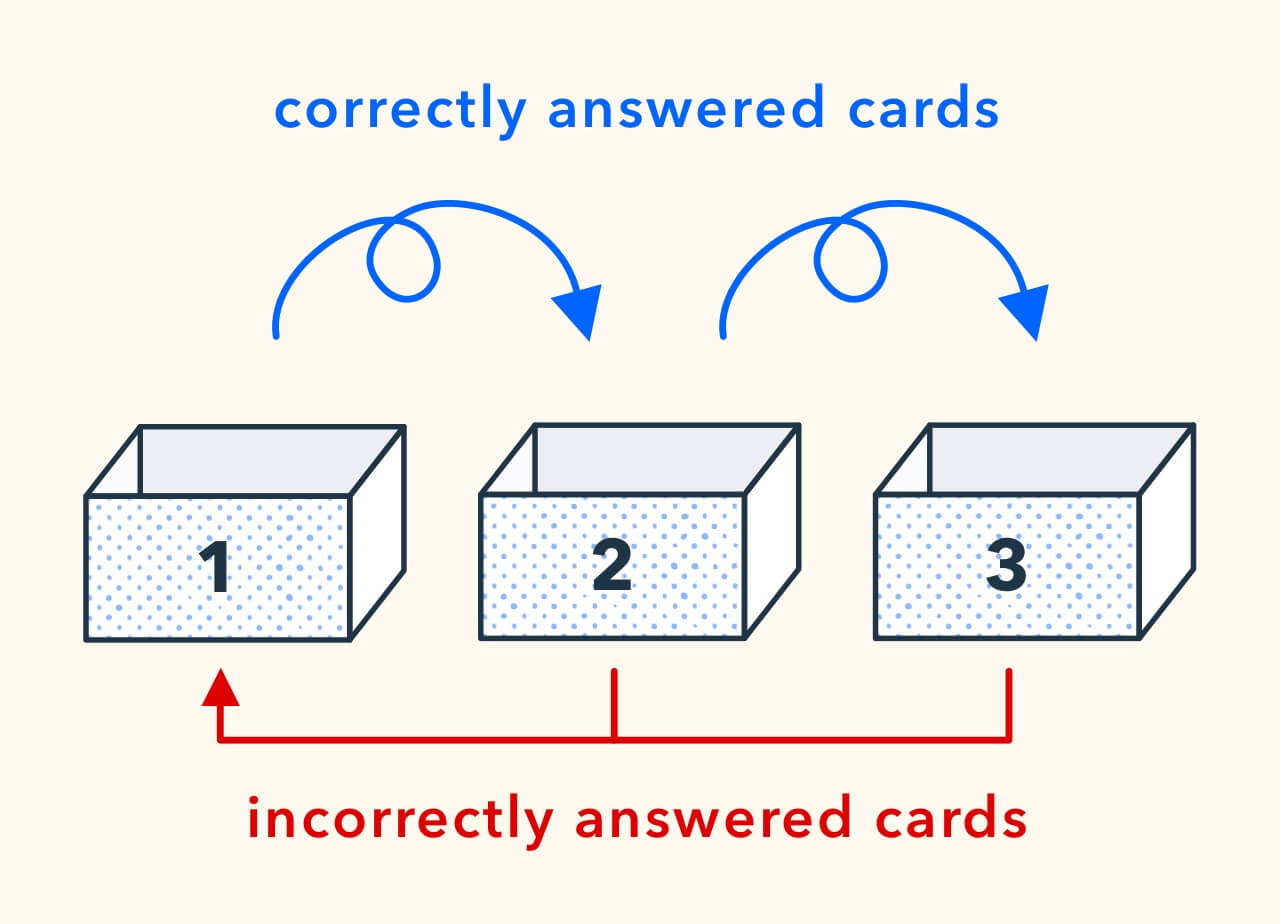There are many different methods out there to improve your study game. We’ve recently discussed the SQ3R method for efficiently reading textbooks and the importance of forgetting what you’ve studied then revisiting it with retrieval practice.
Another method that many people utilize in building better memorization is called the Leitner System. It’s a method of studying that consists of reviewing material at increasing intervals as you become more familiar with it. It is most commonly practiced with flashcards.
The Leitner System is based on the principle of spaced repetition, the idea that our brains will better remember material if we revisit it repeatedly over a length of time. This idea has repeatedly been backed by science as the best way to retain information over long periods of time.
Why the Leitner System Works for Test Preparation
The Leitner Method is designed to give the most attention to study subjects that are more challenging for a person to recall while minimizing the repetitive studying of well understood subjects. This means a major benefit of using the Leitner technique is decreased study time.
Another benefit of the Leitner method is the ability to observe your progress and improvement firsthand. Over just a couple study sessions, you’ll start to see the progress you’re already making. This can be a nice motivator to continue studying with confidence.
3 Steps to Build the Leitner System
Step 1: Create physical flashcards that feature the topics and material you are studying. These cards should have the name of a term or concept on one side and the explanation on the other.
Step 2: Compile 3-5 physical boxes or storage bins that can house the flashcards and place them side-by-side on your desk or study area.
Step 3: Label each box with a designated study time period. For example:
Box 1 – every day
Box 2 – every other day
Box 3 – once per week
How to Start Studying with the Leitner System
All your flashcards should begin in Box 1. Begin reviewing each flashcard, quizzing yourself on if you can recall or explain the information on each side.
If you answer a flashcard correctly, move the card into Box 2. If you miss it, place the card back into Box 1. Once you’ve gone through all your flashcards, you’ll see a distinction between the cards you are more familiar with are sitting in Box 2, while concepts you still need to work on remain in Box 1.

Continue this method each time you review your flashcards. If you get a card correct, move it to the next box. If you get the card wrong, move it back to the previous box.
Once you are done going through all the cards, you now have a system to distinguish which cards need to be reviewed more often (Box 1 – every day) and which cards can be reviewed less often (Box 3 – once per week).
Once all your cards are in Box 3, you’ve successfully studied all your material.
The Leitner System Requires Studying Over Longer Periods of Time
The largest requirement of the Leitner System is giving yourself enough time beforehand. It’s a system that does not work well with last minute cramming.
It is especially effective for long-term studying scenarios where you have at least a couple months until your examination. Introducing new cards to Box 1 over time is a great way to build up your pool of knowledge in a slow, methodical, and meaningful way. Just make sure to revisit the other boxes regularly so that the more familiar material also remains top of mind.
Don’t blame yourself if you’ve never heard of the Leitner System before today. While we were taught many things in school, studying effectively wasn’t one of them. Luckily you’re on the right path to success by learning more about study methods like this one. You got this!

 learning science
learning science